- Home
- Scott Turow
Ultimate Punishment
Ultimate Punishment Read online
Ultimate Punishment
ALSO BY SCOTT TUROW
Limitations (2006)
Ordinary Heroes (2006)
Reversible Errors (2002)
Personal Injuries (1999)
The Laws of Our Fathers (1996)
Pleading Guilty (1993)
The Burden of Proof (1990)
Presumed Innocent (1987)
One L (1977)
SCOTT TUROW
ULTIMATE PUNISHMENT
A Lawyer’s Reflections on Dealing with the DEATH PENALTY
PICADOR
FARRAR, STRAUS AND GIROUX • New York
FOR FOUR FRIENDS WHO HAVE SHAPED
MY LIFE AS A LAWYER—
Jeremy Margolis
Duane Quaini
Thomas P. Sullivan
Bill Witkowski
CONTENTS
ULTIMATE PUNISHMENT
PREAMBLE TO THE REPORT OF THE ILLINOIS
GOVERNOR’S COMMISSION ON CAPITAL
PUNISHMENT, APRIL 2002
NOTES
ACKNOWLEDGMENTS
Ultimate Punishment
1
LAW AND MURDER: MICHELLE THOMPSON AND JEANINE NICARICO
ON FEBRUARY 3, 1984, a young woman named Michelle Thompson and a male friend, Rene Valentine, were forced at gunpoint from the car they’d just entered in a parking lot outide D. Laney’s, a nightclub in Gurnee, Illinois, north of Chicago. The gunman walked Valentine a short distance, then shot him in the chest at point-blank range. When the police arrived, Michelle Thompson was gone.
I was an Assistant United States Attorney in Chicago at the time, and my oldest friend in the federal prosecutor’s office, Jeremy Margolis, helped direct the FBI’s search for Thompson. Initially, the case appeared to be an interstate kidnapping, which is a federal matter. Within a few days, the crime proved to be one within the province of state authorities: murder. Beaten, raped, and strangled, Thompson’s body was discovered in Wisconsin. Shortly thereafter, Hector Reuben Sanchez, an illiterate but ambitious factory worker and burglar, was arrested, along with an accomplice, Warren Peters, Jr., who ultimately agreed to testify against Sanchez.
Deeply enmeshed in the case by now, Jeremy was appointed a special Assistant State’s Attorney to help the local prosecutors try Sanchez in state court in Lake County, Illinois. As Jeremy prepared for trial, I spent hours listening to him describe Michelle Thompson’s miserable final night. After Sanchez raped Thompson on the floor of the family room in his house, she escaped and dashed, still handcuffed and naked below the waist, through the snow to the back door of a neighbor’s, where she pleaded for help. Sanchez found her there and later assuaged the neighbor by telling him that Thompson was drunk and hysterical. The pathos of the neighbor’s account of the young woman being led away by Sanchez was heartbreaking. Michelle Thompson had been abused now for several hours, and she offered no further resistance. She was resigned to being tortured and degraded, and hoped only to live—a meager, abased wish that went unfulfilled. Back in his house, Sanchez gagged Michelle Thompson with a strip of cloth, bent her over a washing machine and sodomized her, then strangled her with a nylon strap and a coat hanger. He finished the job by beating her head on the basement floor.
In pursuing the case, the FBI had discovered that nine years earlier Sanchez had murdered his girlfriend, slashing her throat and shooting her, then escaped prosecution by threatening the witnesses. This time Jeremy and the Lake County State’s Attorneys were determined that there would be no repetitions. They were seeking the death penalty.
Through Jeremy, I followed the progress of the case closely. Late in the summer, he and Ray McKoski, then the First Assistant State’s Attorney in Lake County, proceeded to trial in Waukegan, Illinois. When Sanchez was convicted and sentenced to death in September 1984, I relished their victory.
That sideline experience remained my only direct exposure to capital prosecutions until 1991, when I was asked to take on the pro bono appeal of Alejandro Hernandez. By then I was in private practice as a partner in the Chicago office of Sonnenschein Nath and Rosenthal, a large national firm. I’d known of Hernandez for nearly a decade by now as a co-defendant in what the press commonly referred to as “The Case That Broke Chicago’s Heart.” On February 25, 1983, Patricia Nicarico, who worked as a school secretary in Naperville, a suburb outside Chicago, had returned home to discover that her front door had been kicked in and that her ten-year-old daughter, Jeanine, was missing. Two days later, the girl’s body, blindfolded and otherwise clad only in a nightshirt, was found in a nearby nature preserve. She had died as the result of repeated blows to the head, administered only after she had been sexually assaulted in a number of ways. More than forty law enforcement officers joined a multi-jurisdictional task force organized to hunt down the killer, for whose capture a $10,000 reward was offered.
By early 1984, the case had still not been solved, and a heated primary campaign was under way for the job of State’s Attorney in DuPage County. A few days before the primary, on March 6, 1984, Alex Hernandez, Rolando Cruz, and Stephen Buckley were indicted, even though six weeks earlier the State’s Attorney had said that there was insufficient evidence to indict anyone.
James Ryan won the election and became the new DuPage County State’s Attorney. (Ryan was elected Attorney General of Illinois in 1994 and served until early 2003, after losing in the November 2002 election, when he was the Republican candidate for Governor.) Ryan’s new office took the case against the three defendants to trial in January 1985. The jury deadlocked on Buckley, but Hernandez and Cruz were both convicted and sentenced to death. There was no physical evidence against either of them—no blood, semen, fingerprints, hair, fiber, or other forensic proof. The state’s case consisted solely of each man’s statements, a contradictory maze of mutual accusations and demonstrable falsehoods as testified to by various informants and police officers. By the time the case reached me, seven years after Hernandez and Cruz were first arrested, the Illinois Supreme Court, in 1988, had reversed the original convictions and ordered separate retrials. Cruz was convicted and sentenced to death again in April 1990. The jury hung in Hernandez’s second trial, but the state put him on trial for his life a third time in May 1991. He was found guilty but sentenced to eighty years, rather than to execution.
When Hernandez’s trial lawyers, Mike Metnick, Jeff Urdangen, and Jane Raley, approached me, they made a straightforward pitch. Their client was innocent. I didn’t believe it. I knew how the system worked. Convict an innocent man once? Not likely, but possible. Twice? Never. And even if it were true, I couldn’t envision convincing an appeals court to overturn the conviction a second time. Illinois elects its state court judges, and this was a celebrated child murder.
The lawyers begged me to read the brief that Larry Marshall, a renowned professor of criminal law at North-western University, had filed in behalf of Cruz, and to look at the transcripts of Hernandez’s trials. By the time I had done this, six weeks later, I knew I had to take the case or stop calling myself a lawyer. Alex Hernandez was innocent.
In June 1985, a few months after Hernandez and Cruz were first convicted, another little girl, Melissa Ackerman, age seven, was abducted and murdered in LaSalle County, about an hour’s drive from Jeanine Nicarico’s house. Both Melissa and Jeanine were kidnapped in broad daylight, carried away in blankets, sodomized, and murdered in a wooded area. A man named Brian Dugan was arrested for Melissa’s murder. In the course of complex plea discussions, his lawyer said that Dugan was prepared to plead guilty not only to the Ackerman killing but to a host of other crimes, including raping and killing two more females. One of the additional women Dugan was prepared to admit he killed was a twenty-seven-year-old nurse named Donna Schnorr. The
other was Jeanine Nicarico.
The prosecutors from DuPage County were contacted and invited to question Dugan, through his attorney. The First Assistant, Robert Kilander, and a younger prosecutor met with Dugan’s lawyer, but after returning to their office, they refused to accept Dugan’s statements or to deal with him further. (Nor did anyone from the DuPage office inform the lawyers for Cruz and Hernandez that another man was prepared to admit to the murder for which their clients were then awaiting execution.)
Faced with DuPage’s response, one of the LaSalle County prosecutors contacted the Illinois State Police to be certain that someone looked into the matter. Under the direction of Commander Ed Cisowski, the state police investigated Dugan’s admission that he was the lone killer of Jeanine. By the time they were done, Cisowski had concluded that DuPage had convicted the wrong men. Dugan was not at work at the time of the murder, and a church secretary recalled speaking to Dugan two blocks from the Nicarico home that day. A tire print found where Jeanine’s body was deposited matched the tires that had been on Dugan’s car. He knew a multitude of details related to the crime that were never publicly revealed, including several facts about the interior of the Nicarico home and the blindfold he’d applied to Jeanine.
Despite all of this, the DuPage County prosecutors attempted, for a decade, to debunk Dugan’s confession. Even after Cruz’s and Hernandez’s second convictions were overturned in July 1994 and in January 1995 as a result of the separate appeals Larry Marshall and I argued, and notwithstanding a series of DNA results that excluded first Hernandez, then Cruz as Jeanine Nicarico’s sexual assailant, while pointing directly at Dugan, DuPage continued to pursue the cases. Only after Cruz was acquitted in his third trial, in late 1995, were both men at last freed.
2
A DEATH PENALTY AGNOSTIC
HERNANDEZ AND CRUZ are but two of seventeen men in Illinois who, since the state reestablished capital punishment in 1977, have been sentenced to death and later legally absolved of the murder for which they were convicted. Three men were freed in 1999 alone, the most celebrated of them Anthony Porter, who at one point had been only fifty hours away from execution. Porter was released in February 1999, after Paul Ciolino, a private investigator working with Northwestern University journalism professor David Protess and his students, tracked down a man in Milwaukee who admitted to the crime for which Porter was to die. Following that, in November of the same year, the Chicago Tribune published a relentless series about failings in the Illinois capital system, focusing not only on the exonerations and related evidentiary problems but also on the high rate of reversals in Illinois’ death cases. Forty-nine percent of death penalty cases had been reversed for a new trial or a new sentencing, with more than a fifth of those reversals arising because of misconduct by prosecutors. In some reversed cases, defendants had been resentenced to death. But often that was not the case.
The Governor of Illinois, George Ryan (no relation to Jim Ryan), was a Republican who had come into office in January 1999 as a lifelong supporter of the death penalty. While a member of the Illinois legislature, he had voted in favor of reestablishing capital punishment in 1977. Nonetheless, he was dismayed by what confronted him. As of the end of 1999, the overall scorecard was something like this. Since 1977, there had been a few more than 270 persons condemned in Illinois whose cases had progressed through an initial appeal. Twelve had exhausted the seemingly everlasting process that is death penalty litigation and been executed. Thirteen had been exonerated. And about 90, who had their death sentences reversed, received some lesser punishment the next time around. In other words, more than a third of the time Illinois had imposed a capital sentence on persons who either were not guilty, or, on second thought, did not deserve execution.
Given his growing awareness of the system’s frequent errors, Governor Ryan found the experience of signing a death warrant for the execution of Andrew Kokoraleis in March 1999 tormenting. Unwilling to repeat that, George Ryan declared a moratorium on further executions on January 31, 2000. Hector Reuben Sanchez, the murderer of Michelle Thompson, was one of roughly 170 prisoners whose death sentence was placed on indefinite hold.
In declaring the moratorium, Governor Ryan labeled Illinois’ capital justice system “fraught with error.” Six weeks later, he named a fourteen-member “blue-ribbon” Commission to tell him how to reform capital punishment in Illinois. I was one of the persons the Governor appointed to serve.
I had been in the Netherlands on a book tour, driving past flooded farm fields on the way to The Hague, when I was first phoned by Matt Bettenhausen, Illinois’ Deputy Governor for Criminal Justice and Public Safety, who became Executive Director of the Commission. I did not hesitate when he asked if I would like to be considered. It was important work and would offer me the chance to systematically contemplate an issue that had long divided me against myself.
I am sure many Illinois residents were startled to see someone whose name they might know as a storyteller chosen to help deliberate about what is probably the gravest real-life problem in the law. Although I spend the majority of my time these days as a writer, I remain a partner in the Chicago office of Sonnenschein. After the publication of my first two novels—Presumed Innocent in 1987 and The Burden of Proof in 1990—I began to limit my time practicing law, devoting much of it to pro bono matters. Thus, in the nineties, the bulk of my hours as lawyer went into the post-trial phases of two very different capital prosecutions, Hernandez and a case I took on after that for a young man named Christopher Thomas. These activities did not make me a death penalty expert by any stretch; many of my colleagues on the Commission had dealt with capital cases far more regularly. But I’d had intense personal experiences that certainly gave me a hands-on perspective.
The Governor introduced the Commission at a teeming press conference on March 9, 2000, at the Thompson Center in Chicago. When one of the reporters asked how many of us opposed capital punishment, only four of the members—former U.S. Senator Paul Simon; Rita Fry and Ted Gottfried, both public defenders; and Bill Martin, who, years ago as a prosecutor, had sent mass-murderer Richard Speck to death row—raised their hands. I had felt no inclination to raise mine.
In college and graduate school, from 1966 to 1972, I adhered to the Aquarian faith of the era. I accepted the fundamental goodness of all people and accordingly regarded capital punishment as barbaric. By 1978, I’d become an Assistant United States Attorney in Chicago. There was no federal death penalty in those years. (It was reenacted in 1988, but only for murders related to a few drug offenses. In 1994, it was expanded to apply to murders in many more circumstances.) That was fine with me when I took the job, and I was somewhat jolted a few months after I’d started, when one of my closest friends in the office, Julian Solotorovsky, was assigned to a murder case. Ralph Perez, a patient at the North Chicago Veterans Administration Hospital, had been watching TV when another patient changed the channel. Ralph responded by stomping the man to death. Under the U.S. criminal code, a state crime committed on federal lands is prosecuted in federal court, but punished according to state law. That meant Ralph was subject to the death penalty.
Julian had been raised a Quaker, and I remember the two of us staring at each other across his desk when we first discussed this prospect. As it happened, Ralph was found incompetent to stand trial, but the fact that seeking capital punishment might conceivably be among my responsibilities was stunning. Could I actually do that?
By 1984, when Jeremy Margolis tried Hector Reuben Sanchez, I’d decided I could. Over my years as a prosecutor, my view of human nature had acquired a far more Hobbesian cast. I’d learned that people who commit crimes are, very often, engaged in an act of self-definition. They do not think much of themselves and they are inclined, as a result, to treat others cruelly. They lie for laughs and do violence, either as a business or because they are angry and it gratifies them. In a normative sense, they are bad people—and they are going to stay that way, in most instances. My job
as a prosecutor—and the sensible first response of society—was to make sure they didn’t do bad things again. And I could see that a sentence of death was the most certain means to accomplish that goal in extreme cases.
Thus, if I’d had to trade places with Jeremy and ask a jury to condemn Hector Sanchez to death, I believed I could do it. I did not force myself to justify capital punishment, just as I did not routinely question the wisdom of the RICO statute or the mail fraud or securities laws it was my job to enforce. But I could follow the will of my community on the issue.
The ten years I spent in the nineties on the defense side of capital cases taught me many cautionary lessons about the death penalty, but when Matt Bettenhausen called me about serving on the Commission, I still hung in a sort of ethical equilibrium, afraid to come down on either side of the question of whether capital punishment was actually right or wise. Many of the traditional arguments against capital punishment had little traction with me. I respect the religious views of persons who regard life as sacred, but I don’t want government action predicated on anybody’s religious beliefs. The simple principle that says “If killing is wrong, then the state shouldn’t do it” has always struck me as just that—simple, too simple for the complexities of human conduct. Besides, it would also bar certain state violence I accept as a necessity—war or the use of lethal force when called for by police. Nor was I moved by those who denounce the death penalty as revenge, which pretends that getting even isn’t one of the motives for putting criminals in prison. How else to explain the stark conditions of American penitentiaries? On the other hand, I had a hard time defining what good came of capital punishment.

 Testimony
Testimony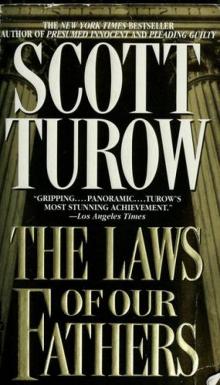 The Laws of Our Fathers
The Laws of Our Fathers Ordinary Heroes
Ordinary Heroes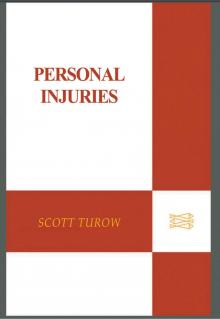 Personal Injuries
Personal Injuries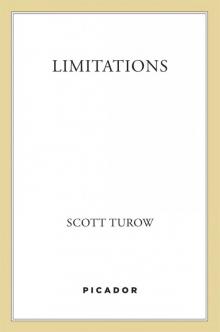 Limitations
Limitations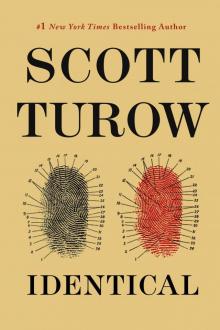 Identical
Identical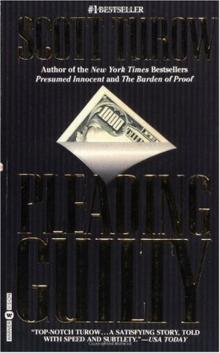 Pleading Guilty
Pleading Guilty Presumed Innocent
Presumed Innocent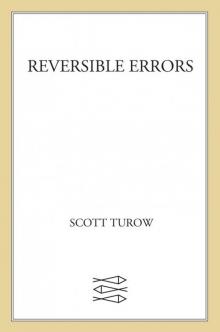 Reversible Errors
Reversible Errors One L: The Turbulent True Story of a First Year at Harvard Law School
One L: The Turbulent True Story of a First Year at Harvard Law School Ultimate Punishment
Ultimate Punishment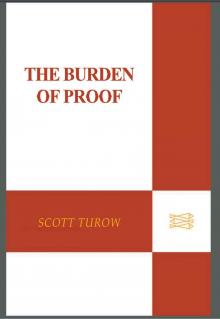 The Burden of Proof
The Burden of Proof Ordinary Heroes (2005)
Ordinary Heroes (2005)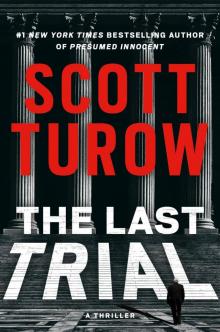 The Last Trial
The Last Trial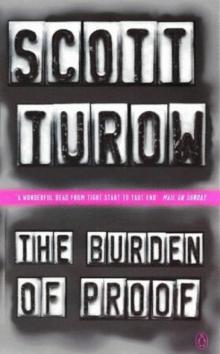 The Burden of Proof kc-2
The Burden of Proof kc-2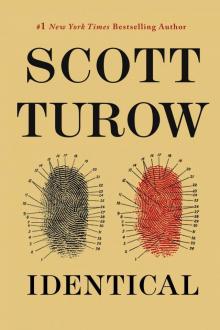 KC09 - Identical
KC09 - Identical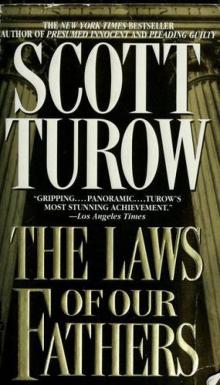 The Laws of our Fathers kc-4
The Laws of our Fathers kc-4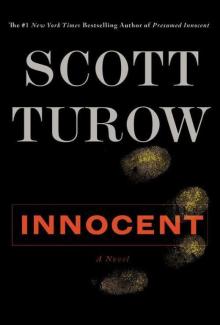 Innocent kc-8
Innocent kc-8 One L
One L Identical kc-9
Identical kc-9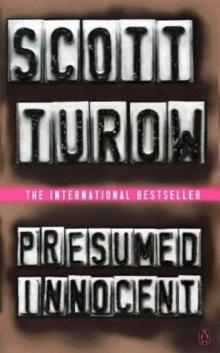 Presumed innocent kc-1
Presumed innocent kc-1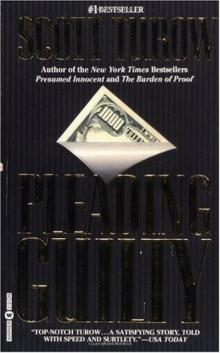 Pleading Guilty kc-3
Pleading Guilty kc-3 One L (1977)
One L (1977)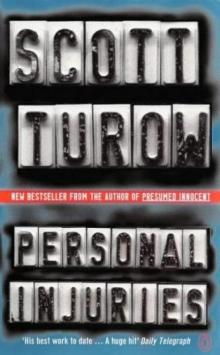 Personal injuries kc-5
Personal injuries kc-5